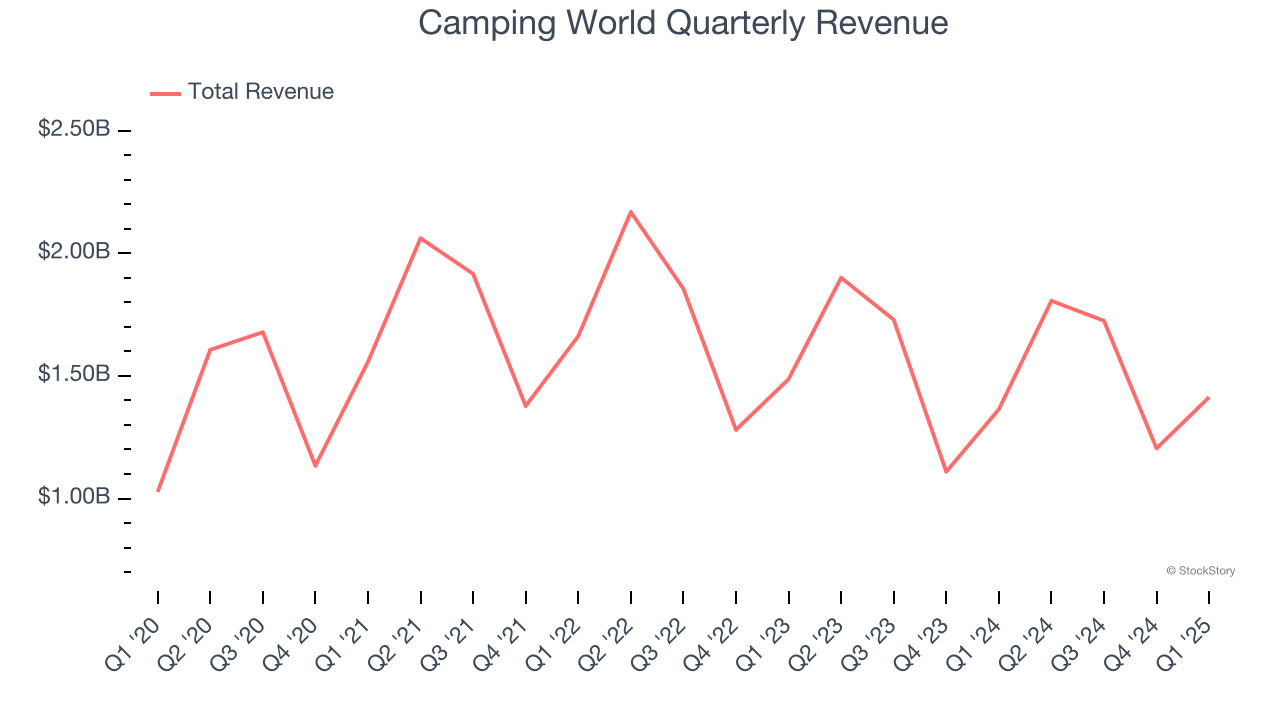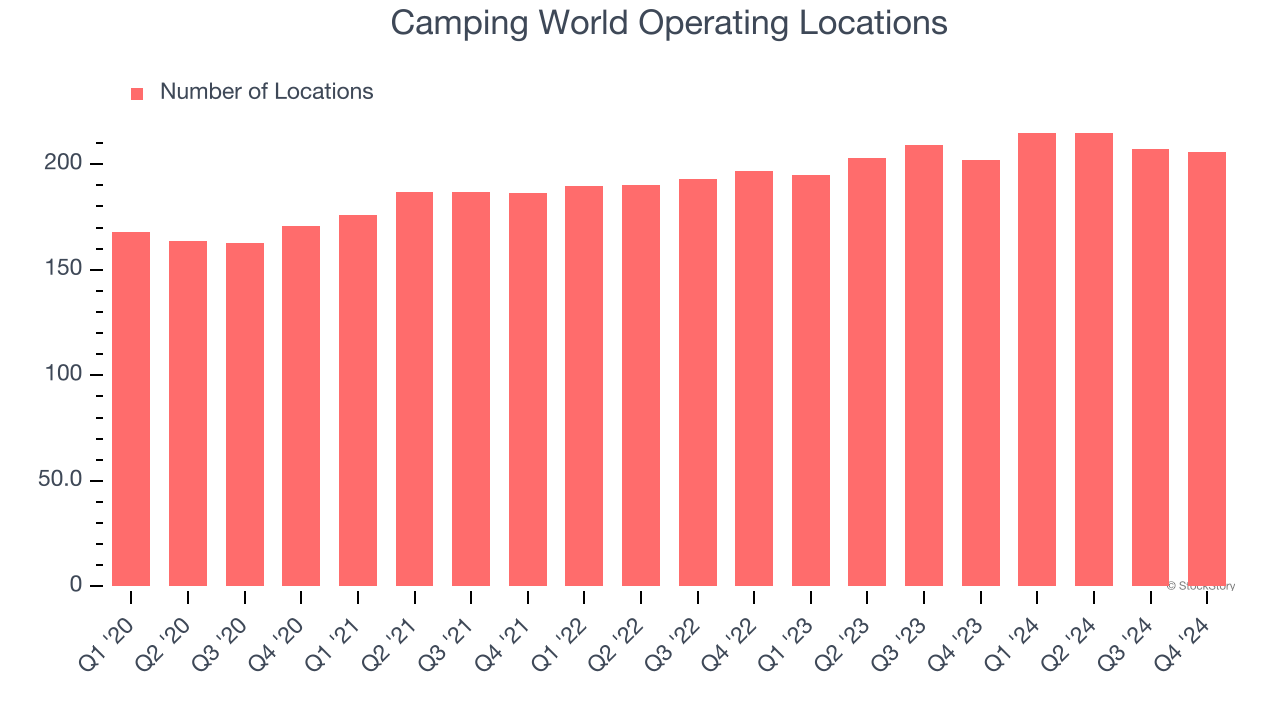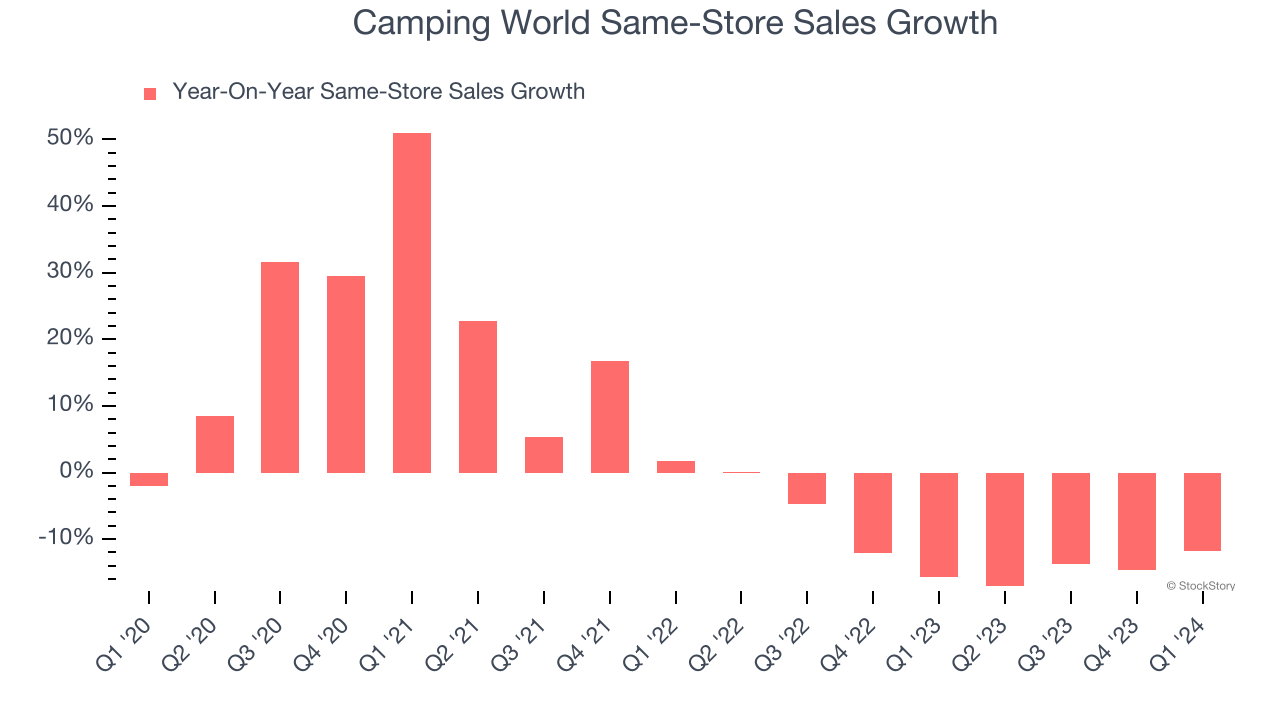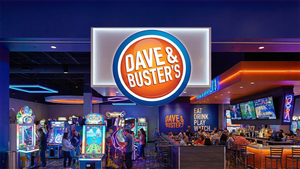
Recreational vehicle (RV) and boat retailer Camping World (NYSE: CWH) missed Wall Street’s revenue expectations in Q1 CY2025 as sales rose 3.6% year on year to $1.41 billion. Its non-GAAP loss of $0.16 per share was 21.6% above analysts’ consensus estimates.
Is now the time to buy Camping World? Find out by accessing our full research report, it’s free.
Camping World (CWH) Q1 CY2025 Highlights:
- Revenue: $1.41 billion vs analyst estimates of $1.43 billion (3.6% year-on-year growth, 1% miss)
- Adjusted EPS: -$0.16 vs analyst estimates of -$0.20 (21.6% beat)
- Adjusted EBITDA: $31.15 million vs analyst estimates of $28.03 million (2.2% margin, 11.1% beat)
- Operating Margin: 1.5%, up from 0.3% in the same quarter last year
- Free Cash Flow was -$256 million compared to -$93.91 million in the same quarter last year
- Market Capitalization: $860.9 million
Marcus Lemonis, Chairman and Chief Executive Officer of CWH stated, “We made the commitment at the beginning of the year to sell more units and make more money. Our results reflect a material year-over-year improvement in adjusted EBITDA, increasing nearly 4x vs. the prior year, with another period of record new and used combined unit market share. We have not seen any discernable impacts on consumer behavior from tariffs, with our April-to-date same store unit sales tracking up mid-teens on used and up high-singles on new. Through recent actions to lower headcount and optimize our footprint, we expect SG&A reductions to further improve profitability in the months ahead.”
Company Overview
Founded in 1966 as a single recreational vehicle (RV) dealership, Camping World (NYSE: CWH) still sells RVs along with boats and general merchandise for outdoor activities.
Sales Growth
Examining a company’s long-term performance can provide clues about its quality. Any business can experience short-term success, but top-performing ones enjoy sustained growth for years.
With $6.15 billion in revenue over the past 12 months, Camping World is a mid-sized retailer, which sometimes brings disadvantages compared to larger competitors benefiting from better economies of scale.
As you can see below, Camping World grew its sales at a sluggish 4.2% compounded annual growth rate over the last six years (we compare to 2019 to normalize for COVID-19 impacts).

This quarter, Camping World’s revenue grew by 3.6% year on year to $1.41 billion, falling short of Wall Street’s estimates.
Looking ahead, sell-side analysts expect revenue to grow 7.7% over the next 12 months, an acceleration versus the last six years. This projection is noteworthy and indicates its newer products will spur better top-line performance.
Unless you’ve been living under a rock, it should be obvious by now that generative AI is going to have a huge impact on how large corporations do business. While Nvidia and AMD are trading close to all-time highs, we prefer a lesser-known (but still profitable) stock benefiting from the rise of AI. Click here to access our free report one of our favorites growth stories.
Store Performance
Number of Stores
The number of stores a retailer operates is a critical driver of how quickly company-level sales can grow.
Over the last two years, Camping World opened new stores at a rapid clip by averaging 5% annual growth, among the fastest in the consumer retail sector. This gives it a chance to become a large, scaled business over time.
When a retailer opens new stores, it usually means it’s investing for growth because demand is greater than supply, especially in areas where consumers may not have a store within reasonable driving distance.
Note that Camping World reports its store count intermittently, so some data points are missing in the chart below.

Same-Store Sales
The change in a company's store base only tells one side of the story. The other is the performance of its existing locations and e-commerce sales, which informs management teams whether they should expand or downsize their physical footprints. Same-store sales gives us insight into this topic because it measures organic growth for a retailer's e-commerce platform and brick-and-mortar shops that have existed for at least a year.
Camping World’s demand has been shrinking over the last two years as its same-store sales have averaged 14.3% annual declines. This performance is concerning - it shows Camping World artificially boosts its revenue by building new stores. We’d like to see a company’s same-store sales rise before it takes on the costly, capital-intensive endeavor of expanding its store base.
Note that Camping World reports its same-store sales intermittently, so some data points are missing in the chart below.

Key Takeaways from Camping World’s Q1 Results
We were impressed by how significantly Camping World blew past analysts’ EPS and EBITDA expectations this quarter. On the other hand, its revenue slightly missed. Zooming out, we think this was a solid quarter. The stock traded up 2.8% to $14.50 immediately after reporting.
Indeed, Camping World had a rock-solid quarterly earnings result, but is this stock a good investment here? What happened in the latest quarter matters, but not as much as longer-term business quality and valuation, when deciding whether to invest in this stock. We cover that in our actionable full research report which you can read here, it’s free.





